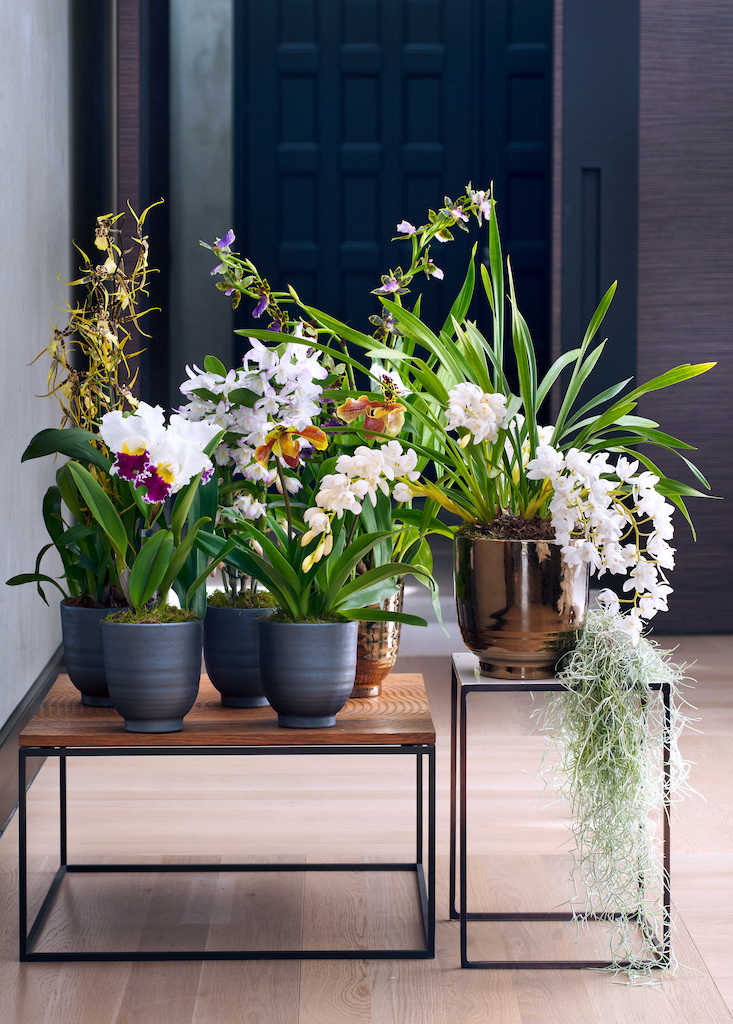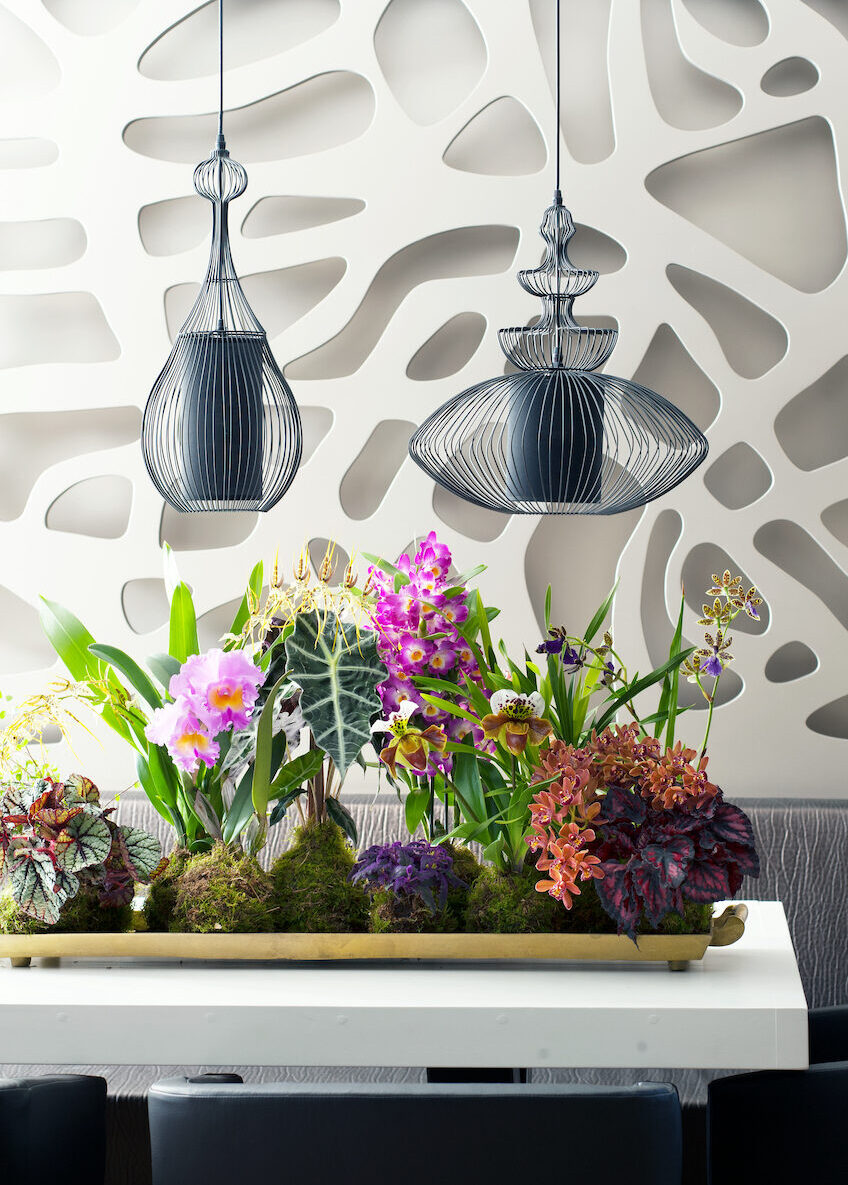This is how special exclusive orchids are
To give credit where credit’s due: within the Orchidaceae family, Phalaenopsis is the original trailblazer that introduced the public to the exotic beauty of orchids. However, this family of plants includes many other fabulous bloomers, all equally easy to care for and just as charismatic – and those exclusive undiscovered treasures deserve to be better known. Not least because they fit so well into the current interior trends for a bit of mystery and supernaturally beautiful shapes. Read on to know more about exclusive orchids.
Origin of exclusive orchids
Orchids are herbaceous perennial plants and occur in the wild almost everywhere in the world, in both warmer and cooler regions, although 85% come from the tropics and subtropics. An orchid flower can be easily distinguished from other flowers. It is made up of three sepals and three petals. The middle petal has a different shape, is somewhat larger and is called the lip. That lip serves as a kind of platform for insects to easily reach the heart of the flower. The heart contains the pollen cluster, also called the stamen. All plants in the orchid family have the same flower structure.
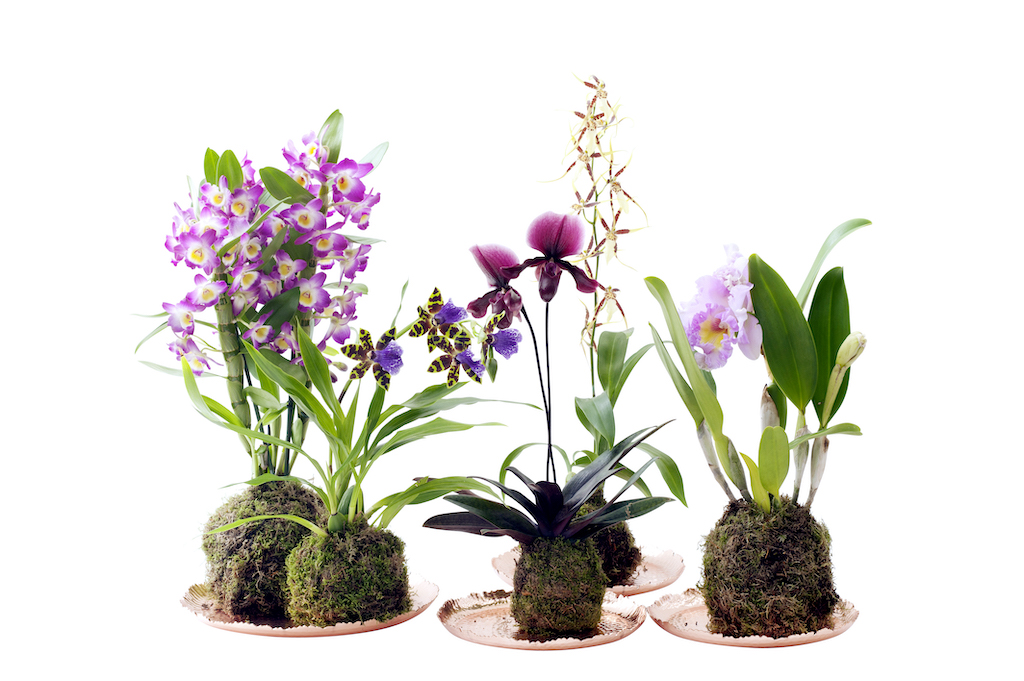
Photo: Thejoyofplants.co.uk
Exclusive orchids & cultivation
Orchids make up one of the largest plant families. There are more than 25,000 known species, and new ones are still being discovered regularly. In warmer regions such as the tropical rainforest orchids often grow on trees, branches or twigs with their roots in the air. These are called epiphytic orchids. Epiphytes are plants that grow on something without drawing nutrients from it. For cultivated specimens, this means that they need little water and are grown on special airy potting mixtures. This replicates nature as closely as possible.
Choice of orchids
A wide variety of species and cultivars is available. An alphabetical list of the most exclusive orchids and their characteristics is given below.
Brassia
The narrow, slightly curling ribbon leaves and the bizarre structure make Brassia a very unusual orchid. The plant has curved stems with 10 to 15 greenish flowers with a diameter of 15 to 20 cm. The flowers themselves have blackish-purple spots, and the white lips have distinctive green patches. This extra-terrestrial appearance makes Brassia a very eye-catching orchid. The long ribbon-like flowers have earned it the nickname ‘spider orchid’. Despite its exotic appearance, the beautifully scented Brassia does well in a living room. Read more about Brassia (Cambria-like).
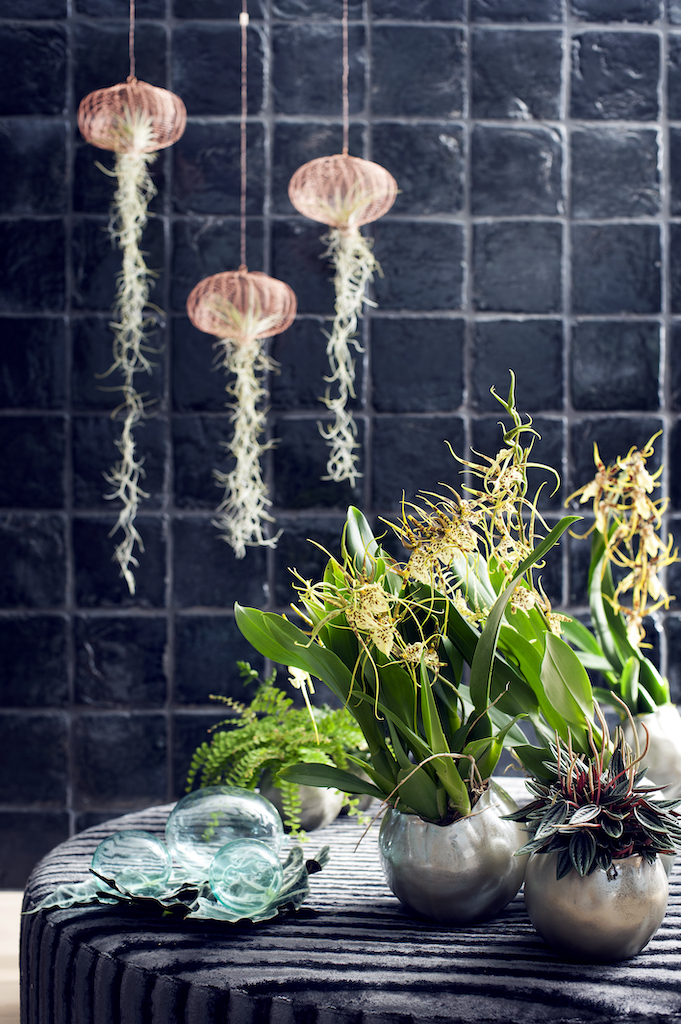
Photo: Funnyhowflowersdothat.co.uk
Cattleya
Cattleya is a distinctive houseplant with a pseudobulb on which there are just a couple of thick leaves. There are large and small-flowered Cattleyas: the small-flowered species have more flowers per stem than the large-flowered ones. The flowers are usually ten to twenty centimetres in diameter, and range in colour from white through yellow, orange, green, pink, and purple to fabulous pastels. Some are beautifully scented, which has earned Cattleya the nickname ‘Queen of the Orchids’. Read more about Cattleya.
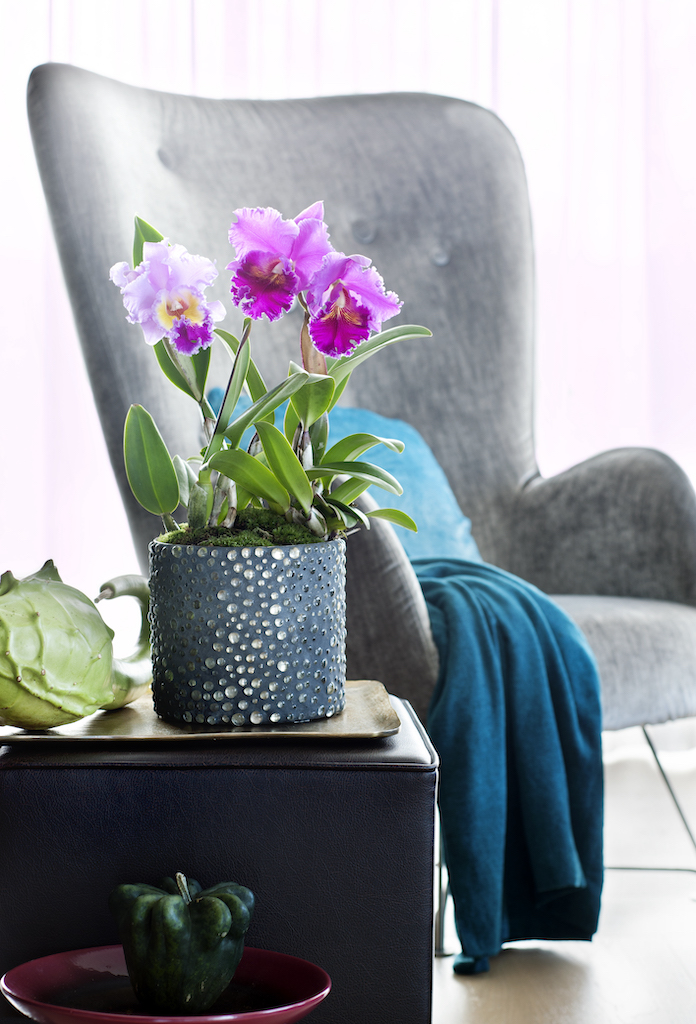
Photo: Funnyhowflowersdothat.co.uk
Dendrobium
Stately with a crown of flowers that rises upwards, Dendrobium is very distinctive. It differs from other orchid species with its clusters of flowers that form at the axil of each leaf and which give off a lovely fragrance. The unusual way of flowering on the stem means Dendrobium looks very different from most orchids. The plant blooms for at least 8 weeks a year with sizeable flowers which are five to eight centimetres wide. The colour varies from entirely white through yellow and orange to red and purple and combinations of those colours. Read more about Dendrobiums.
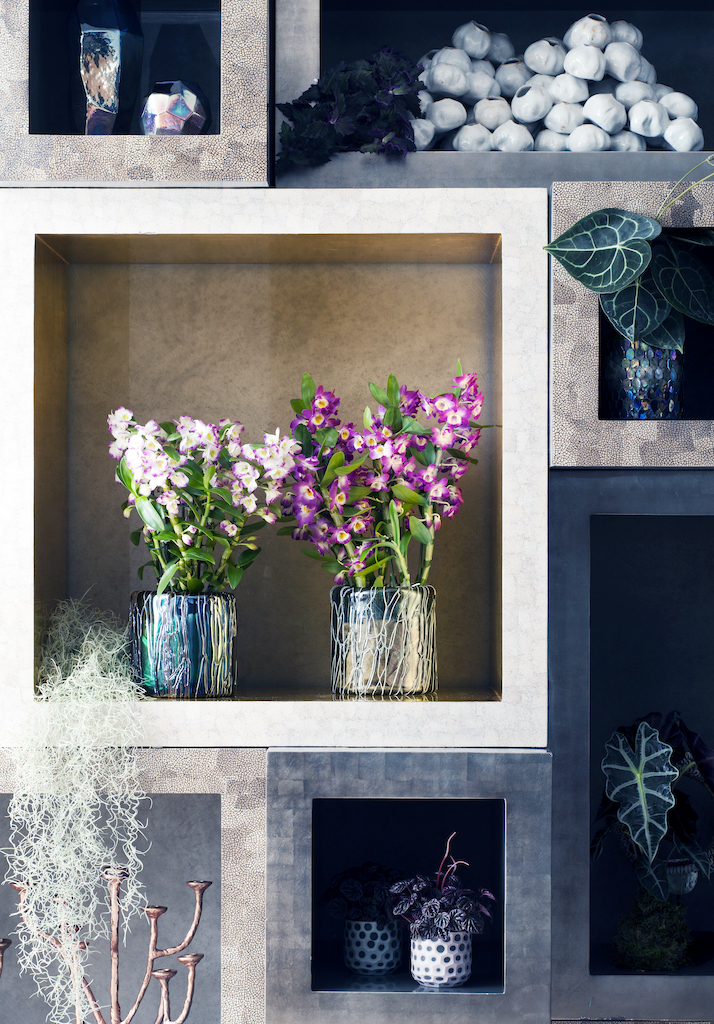
Photo: Funnyhowflowersdothat.co.uk
Paphiopedilum
There is no other orchid as magnificent as Paphiopedilum. The plant is also known as the Venus slipper, and has an eye-catching lip, slender stem and sweeping petals that seem to have sprung straight from a fairytale. The orchid has tall, attractive green foliage, which means that this plant is very pleasant to look at even without flowers. However, the flowers are certainly worth it: russet, yellow or green, with attractive markings and an elegant voluptuous shape. Read more about Paphiopedilum. Read more about Paphiopedilum.
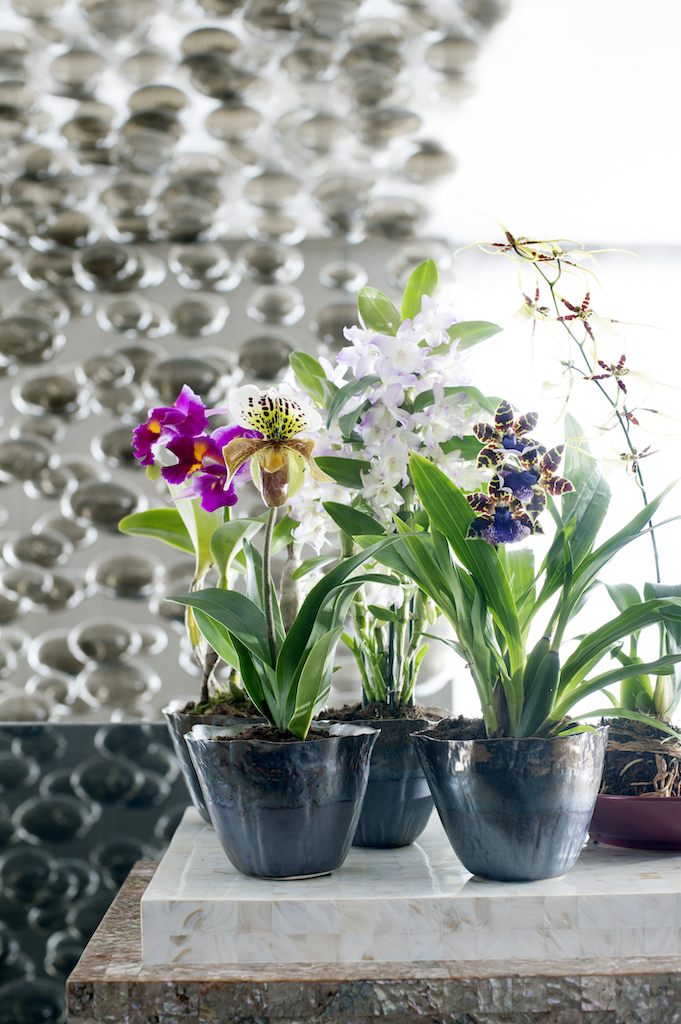
Photo: Funnyhowflowersdothat.co.uk
Zygopetalum
Purple, brown, green, flaming, sometimes a leopard print and always a full, beautifully marked lip – there’s lots going on with Zygopetalum. What makes this orchid eye-catching is that at first glance it appears to be two different flowers. The crown consists of five brown and green petals which can be either pointy or round. Emerging from this is a luxuriant lip, usually white and purple. In the jungle it offers excellent camouflage, but in the living room it actually stands out even more. Read more about the Zygopetalum.
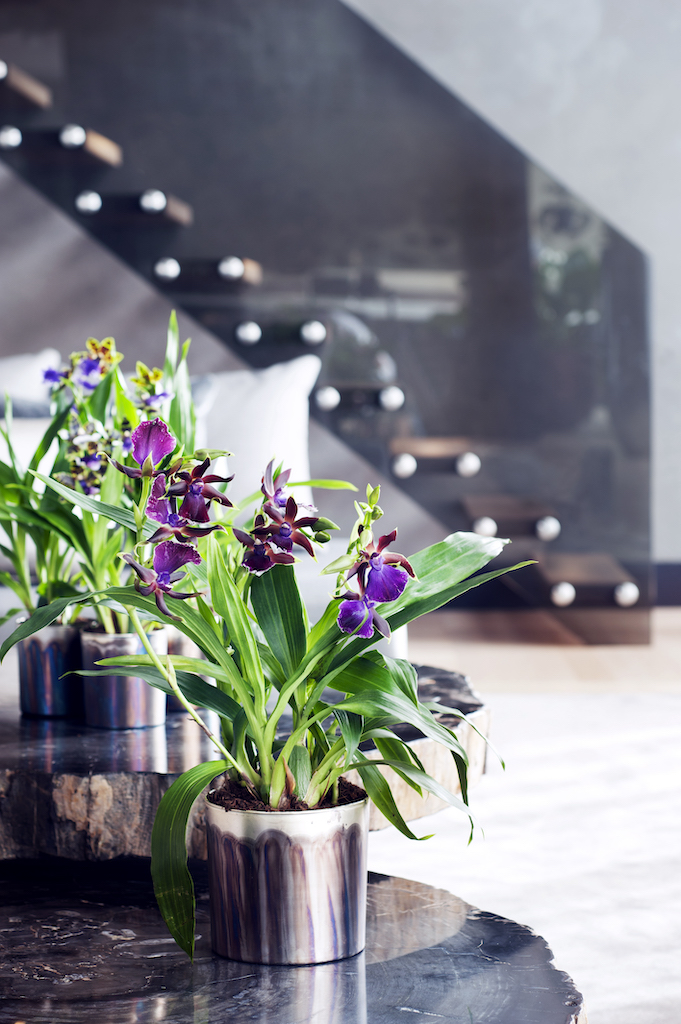
Photo: Funnyhowflowersdothat.co.uk
Read also: How to make orchids rebloom again?
Source: Funnyhowflowersdothat.co.uk.

